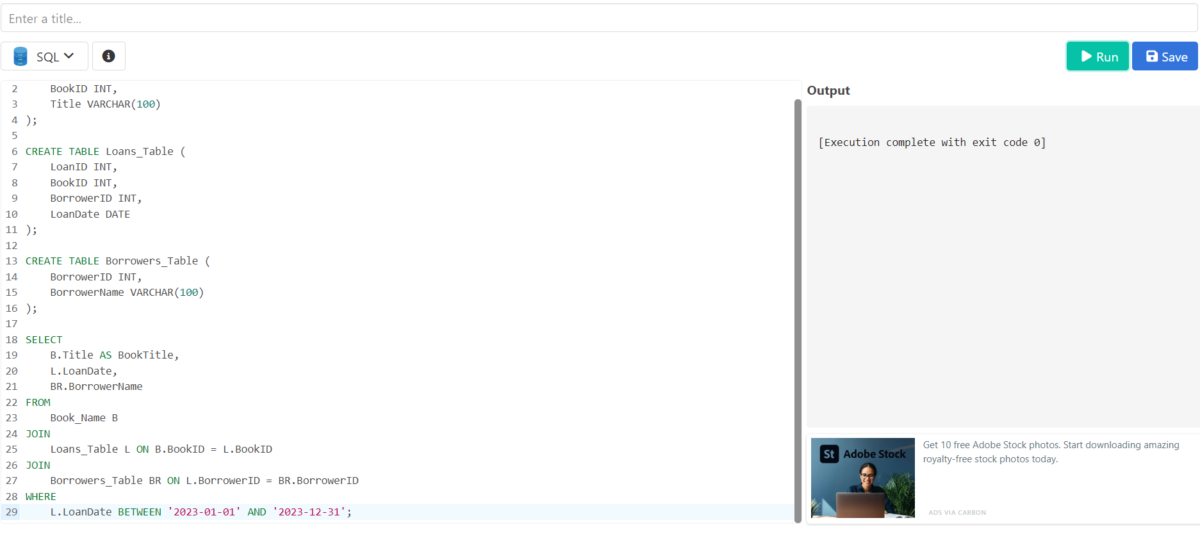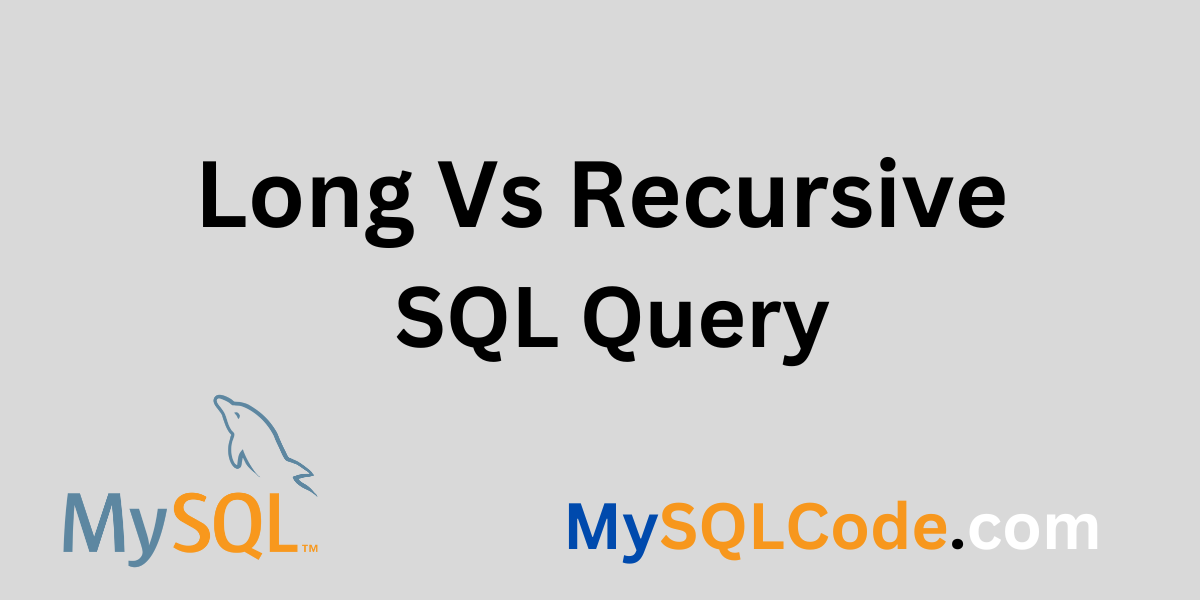In SQL, we frequently use various types of queries to decode a problem. This writing will give you a quick idea about long SQL queries and recursive queries. A Long SQL query is a query that is long and takes a lot of time to complete a process. On the other hand, a recursive query employs some part of the query again to crack complex problems. Both kinds of queries are noteworthy and assist in solving complex problems. Let’s see some illustrations to comprehend the concept and discrepancy between both queries.
What is a Long SQL Query?
A long SQL query is any query that is lengthy and takes a lot of time to complete. A Long SQL query is not a particular type of query in SQL. We can call any query with complicated SQL statements and lengthy code lines as a long query. The long query always takes a lot of time to conclude the process and get the results.
Some noticeable points regarding the Long queries are:
- Database with Multiple Tables: If some query employs multiple tables to solve a problem, then requires many conditions, columns, and joins to execute the logic. Therefore, it will take some more time for implementation than a normal SQL query. So, we name it a long query.
- Complex Conditions: To crack complex problems, we use some queries that apply a logic of multiple and complex conditions. These queries may take plenty of time to process. Sometimes, it again involves logical operators like AND and OR, which causes it a more complicated and long query.
- Using Subqueries Too Much: During SQL queries, the more queries you use, the harder it will be to maintain. These subqueries make it complex and hard. It’ll also add a ton of time to the overall processing.
- Using JOIN Too Much: In SQL long queries, we can see the use of JOINS very frequently. The INNER JOIN, LEFT JOIN, RIGHT JOIN, FULL JOIN, etc, are some types of ‘JOIN’ used in parent queries. So, the JOINS always make the queries complex and also take too much time to process.
What is a Recursive SQL Query?
Problems related to relational databases require the same solution again and again. The problem of using the same query to solve the complex question can be solved using recursive queries in SQL. A recursive query allows us to use the same part of the query again without any additional process. There is a member structure in this query.
The member structure involves two different types of members:
- Anchor Member: Anchor member is nothing but the parent query/ initial query that is repeated.
- Recursive Member: The recursive member contains the subqueries or the nested queries where the actual process/ initial query is implemented.
Example of Long SQL Query
Long SQL queries can be created simply by using different JOINS, Subqueries, and more logic. This will construct some great illustrations of Long SQL queries. Let’s see an example to comprehend the concept.
SELECT
B.Title AS BookTitle,
L.LoanDate,
BR.BorrowerName
FROM
Book_Name B
JOIN
Loans_Table L ON B.BookID = L.BookID
JOIN
Borrowers_Table BR ON L.BorrowerID = BR.BorrowerID
WHERE
L.LoanDate BETWEEN '2023-01-01' AND '2023-12-31';
Code language: SQL (Structured Query Language) (sql)This is just a sample code. You can edit this query with your table and its content. I’m just passing empty tables to the main query. You can replace these sample tables with your table, and execute the code. Let’s see whether this code will execute or not.

Example of Recursive SQL Query
In this illustration, let’s assume an example table where we will try to find out the employees and their managers with the recursive query. Just identical to the previous illustration, I’m passing empty tables. You can replace those tables with your table. Analyze the query now.
WITH RecursiveEmployees AS (
SELECT
EmployeeID,
EmployeeName,
ManagerID,
0 AS HierarchyLevel
FROM
Employees_Table
WHERE
ManagerID IS NULL -- Assuming top-level managers have NULL as ManagerID
UNION ALL
SELECT
E.EmployeeID,
E.EmployeeName,
E.ManagerID,
RE.HierarchyLevel + 1
FROM
Employees_Table E
JOIN
RecursiveEmployees RE ON E.ManagerID = RE.EmployeeID
)
SELECT
EmployeeID,
EmployeeName,
ManagerID,
HierarchyLevel
FROM
RecursiveEmployees
ORDER BY
HierarchyLevel, EmployeeID;
Code language: SQL (Structured Query Language) (sql)I am using Common Table Expression (CTE) to implement the recursive query. This approach is straightforward to decode complex problems that need repetitive solutions. Let’s execute this query and analyze the query.

Long vs. Recursive SQL Query
| Long SQL Query | Recursive SQL Query |
| Complex logic, Joins, and sub-queries are implicated in long questions. | Recursive methods are used to solve complex problems in recursive queries. |
| This means that a large number of JOINS, subqueries, and nested queries always make long queries intricately difficult to understand and perform. | Alternatively, this is straightforward forward as the recursive query has two members. |
| We normally use Long SQL queries to fetch information from multiple tables. | Recursive SQL query mainly aims at getting hierarchical data from a table. |
| So it’s hard to deal with a Long query, and we will not get an optimal solution out of it. | This implies that recursive queries are best in situations where we want the solutions for any problem with ease. |
Summary
In this article, we have seen two queries: Long and Recursive. The long query is an ordinary query employed to fetch the data from multiple tables. A long query takes a lot of time to process the result as it involves various JOINS, subqueries, nested queries, and complex logic. On the other hand, the recursive query permits the retrieval of hierarchical data from the table. The recursive query involves two members: Anchor and Recursive. A recursive query is used to decode complex problems that require an identical solution repetitively. This article also holds a detailed illustration of examples based on both queries. Hope you will appreciate this article.
Reference
Do read the Stack Overflow for more information
